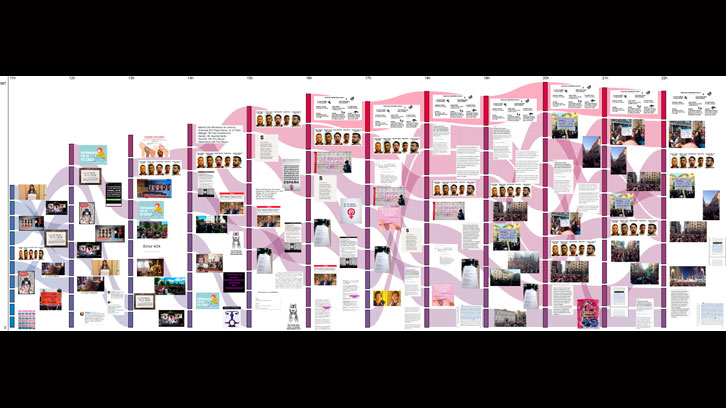Discussion and mediation of social outrage on Twitter

Social networks have become public spaces for personal and collective expression where the visualization of sexual violence against women has played a significant role in recent years. A study conducted by two UAB professors from the Image, Sound and Synthesis Research Group (GRISS) examines the articulation and mediation of predominant messages on Twitter in cases of collective outrage. Specifically, the research focuses on the response to the controversial La Manada sentence.
The rise of the feminist movement in recent years is closely linked to the use of social media which has positioned itself on the international agenda setting. One of the issues that has resonated most is gender-based violence since social networks have encouraged the mass publication of individual experiences of sexual violence. Examples of hashtags that have collected these testimonies are #Metoo, #Niunamenos and, in the Spanish case, #cuéntalo. From these personal experiences, structural problems of society have been highlighted.
La Manada's case generated a great deal of media interest, which also spread across social networks, especially on the day of the public reading of the sentence, on April 26, 2018. This was when the provincial court of Navarra convicted the five men accused of raping a woman during the San Fermines party in 2016 only of sexual abuse and not rape. By capturing and analyzing the tweets related to the sentence during the 12 central hours of reading, the study investigates the evolution of collective outrage on the platform, how dominant messages were negotiated and stabilized, and how they contributed to the organization of mass demonstrations throughout Spain.
Unlike other social networks, those opposed to the sentence were able to dominate the conversation on Twitter. The most prominent messages show different frames (topics) that can be divided into two general groups: those that focused exclusively on the sentence (supporting the victim, criticizing La Manada members and criticizing the court ruling) and those messages that used the sentence as an example for feminist demands (need for feminist sorority and criticism of the court system).
However, the uniqueness of the study lies in the hour-by-hour analysis of the conversation on Twitter in order to analyze the evolution of the messages, paying attention not only to the tweets with the most retweets and hashtags, elements analyzed in previous studies, but also looking at the evolution of shared images and links. This approach allows us to state that each object participates at a different rhythm in the process of creation and reinforcement of the dominant discourse, and this is attributable to the functions performed by each of these resources in the dynamics of the platform. Hashtags organize the content, images channel emotions and enrich the content, being key in organizing the offline demonstrations, and links extend the conversation to other sources.
Image, Sound and Synthesis Research Group (GRISS).
Department of Audiovisual Communication and Advertising.
Universitat Autònoma de Barcelona (UAB).
References
Navarro, C.; Coromina, Ò. (2020). Discussion and mediation of social outrage on Twitter: The reaction to the judicial sentence of La Manada, Communication & Society, 33 (1), 93-106. https://doi.org/10.15581/003.33.1.93-106


